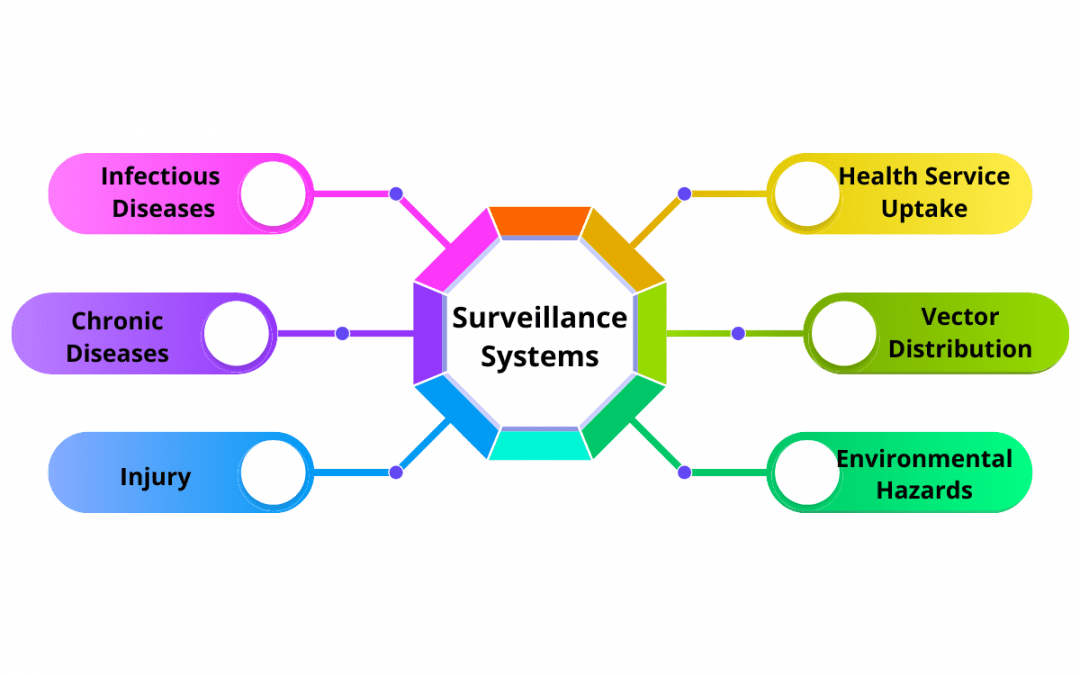Author: Dr. Kahler Stone, MPH, Assistant Professor at Middle Tennessee State University
What is public health surveillance?
When we hear the word surveillance, we might think of spies gathering intelligence or police officers conducting a stakeout, waiting and watching for something to happen. This isn’t too far off from public health surveillance. Routinely gathering data provides us with an accurate depiction of a health situation; this is public health surveillance. Now, we don’t have CIA agents going undercover checking on the health of everyone, but we do have epidemiologists and health analysts regularly looking at different sources of health data – looking for abnormalities or flags that should be further investigated, much like the undercover cop during a stakeout. When the suspect runs out of the bank with a black bag and speeds off, the cop is on the chase to find out what is going on! In the public health surveillance world, any uptick or downtick across different health conditions triggers health officials to respond.
Different types or kinds of surveillance are used in public health, each with unique attributes that suit them for different occasions and purposes. Regardless of the type, all public health surveillance meets the following definition:
“the ongoing, systematic collection, analysis, and interpretation of health-related data essential to planning, implementation, and evaluation of public health practice” – Field Epidemiology
We’ll highlight a few.
Source: CDC Foundation
Types of surveillance
The first and most common type is passive surveillance. Don’t let the name fool you into thinking it’s a sleepy, tired tool with little utility; far from it! This type of surveillance is incredibly powerful and undergirds the entire health intelligence system in the United States. The largest passive surveillance system here in the U.S. is the National Notifiable Disease Surveillance System (NNDSS), which relies on healthcare professionals (and other entities and providers) to report notifiable conditions (i.e., diseases) to local and state health departments, who then feed their information to the national system. This robust passive system has data routinely flowing in, tracking a long list of health conditions. Without this system, we wouldn’t know the incidence (how many new cases) or prevalence (how many people are living with a disease) of vaccine-preventable diseases in the country or where these cases are generally located. This system provides us with consistent health situation status updates.
Opposite to passive surveillance, there is active surveillance. In active surveillance, public health officials will proactively seek out cases of specific diseases by contacting healthcare providers, schools, or laboratories instead of relying on these entities to self-report, like in a passive system. The key difference is that during active surveillance, much energy is spent reaching out to providers to find out if they have any cases. With this approach, the system is said to be more sensitive, meaning it can thoroughly detect new or existing cases. Whereas in a passive system, underreporting is a known drawback. The Foodborne Diseases Active Surveillance Network (FoodNet) is an exemplar of this type of surveillance.
Other types of surveillance are used in public health, such as syndromic surveillance, sentinel surveillance, and environmental surveillance. Each possesses unique features and is interested in capturing specific data types. Syndromic surveillance is a passive system built from medical record symptomology from an electronic health record database across health networks. It is an algorithm-based approach looking for upticks in key symptoms (i.e., headaches, nausea, vomiting, etc.) that might signal the occurrence of an outbreak days or even weeks before it is noticed via a traditional passive system. A sentinel surveillance system uses only select locations or sites for data collection to represent the entire population under surveillance. These systems are best used when a high level of detail on particular health conditions is needed, but the logistics are too complicated and expensive to roll out across all potential data collection sites. Environmental surveillance looks for indicators in the environment that are correlated with upward and downward trends in human disease presence. For example, wastewater surveillance of SARS-CoV-2 has been implemented in multiple countries looking for the presence of the virus in untreated wastewater, an indicator of circulating virus in communities. Another example is mosquito surveillance, where traps are set to collect mosquitos that are further tested for the presence of specific zoonotic diseases, like the West Nile Virus. These surveillance systems provide health information intelligence and inform planning and prevention efforts.
Resources:
- Indicators of Useful Surveillance Systems blog post
- CDC Introduction to Public Health Surveillance
- Smith PF, Hadler JL, Stanbury M, et al. Blueprint version 2.0: updating public health surveillance for the 21st century. J Public Health Manag Pract 2013;19:231–9.
- Introduction to Evaluating Surveillance Systems (On Demand-No CE)

